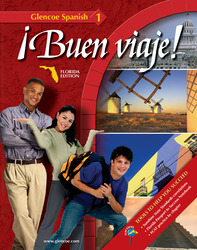¡Buen viaje! Level 1Chapter 2:
Alumnos y cursosWebQuestCiudades hispanohablantes en los Estados
Unidos
 <a onClick="window.open('/olcweb/cgi/pluginpop.cgi?it=gif::::/sites/dl/free/007875660x/208957/sp1_ns01.gif','popWin', 'width=362,height=102,resizable,scrollbars');" href="#"><img valign="absmiddle" height="16" width="16" border="0" src="/olcweb/styles/shared/linkicons/image.gif"> (3.0K)</a> <a onClick="window.open('/olcweb/cgi/pluginpop.cgi?it=gif::::/sites/dl/free/007875660x/208957/sp1_ns01.gif','popWin', 'width=362,height=102,resizable,scrollbars');" href="#"><img valign="absmiddle" height="16" width="16" border="0" src="/olcweb/styles/shared/linkicons/image.gif"> (3.0K)</a>
Objective- To
learn about Spanish-speakers and their
communities in the United States
Notes -
You may wish to brainstorm with students keywords in Spanish that will help direct them to Spanish-language Web sites to complete this WebQuest.
- You
may wish to have students read the Lectura
cultural on pages 62-63 of the textbook,
the Lectura opcional on page 64
of the textbook, and/or the Conexiones
section on pages 66-67 of the textbook
before beginning this activity.
- Point
out to students that Miami, Los Angeles,
and New York City have large Spanish-speaking
populations.
Expansion - After
students have completed the ¡A navegar!
section, you may wish to have them write
on the map from the Antes de navegar
section of their worksheets which nationality
is most represented in each of the cities
listed. Then ask students to think of
reasons why some cities are more heavily
populated with Spanish-speakers of a particular
nationality. For example, Miami is the
U.S. point of entry nearest to Cuba, while
the states of California and Texas border
Mexico.
- In
Despúes de leer A, ¿Cómo
es San Antonio? on page 64 of the
textbook, students are asked questions
about the city of San Antonio. You may wish to have students find information about San Antonio in the most recent census to fully answer the questions.
 | 






